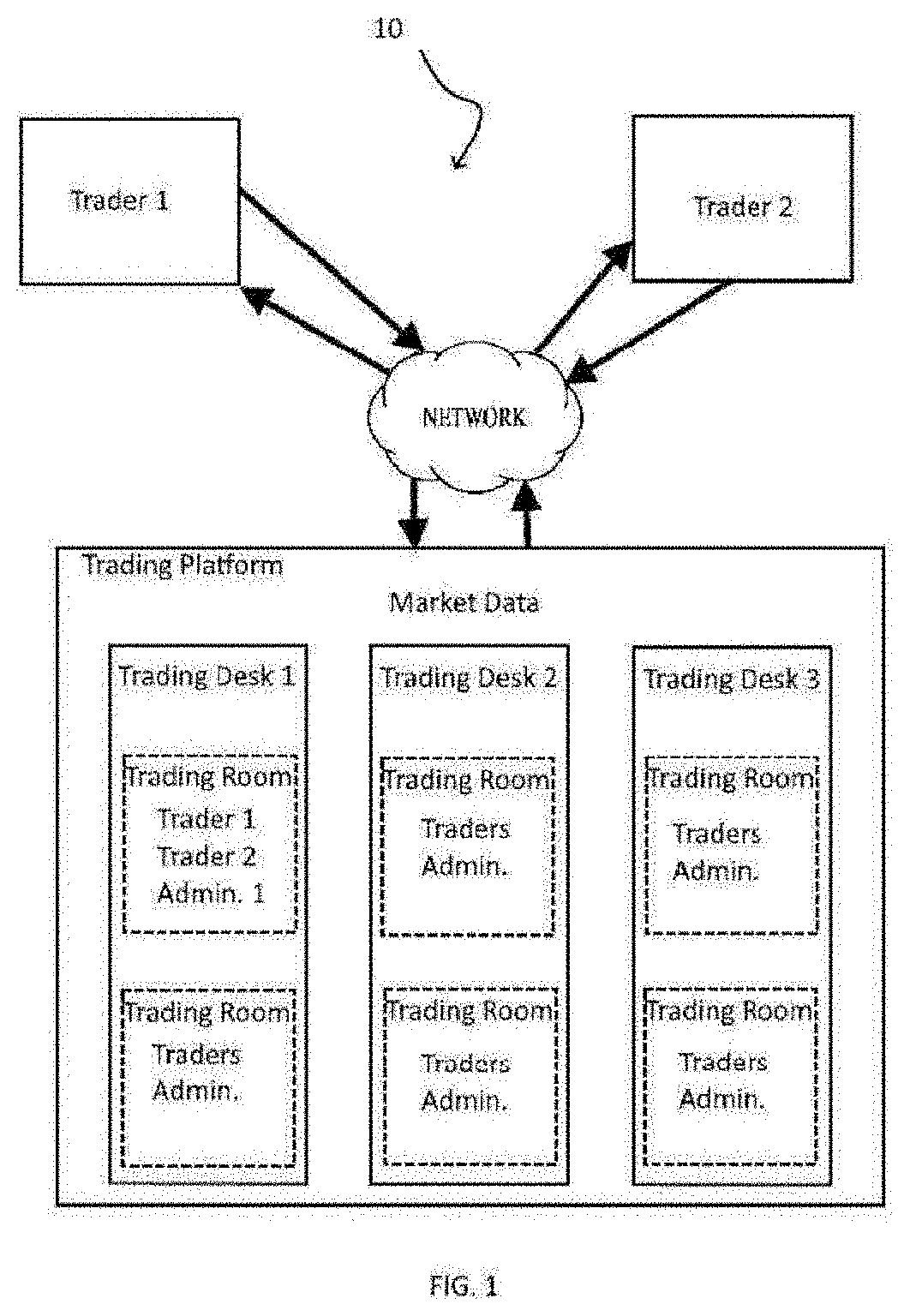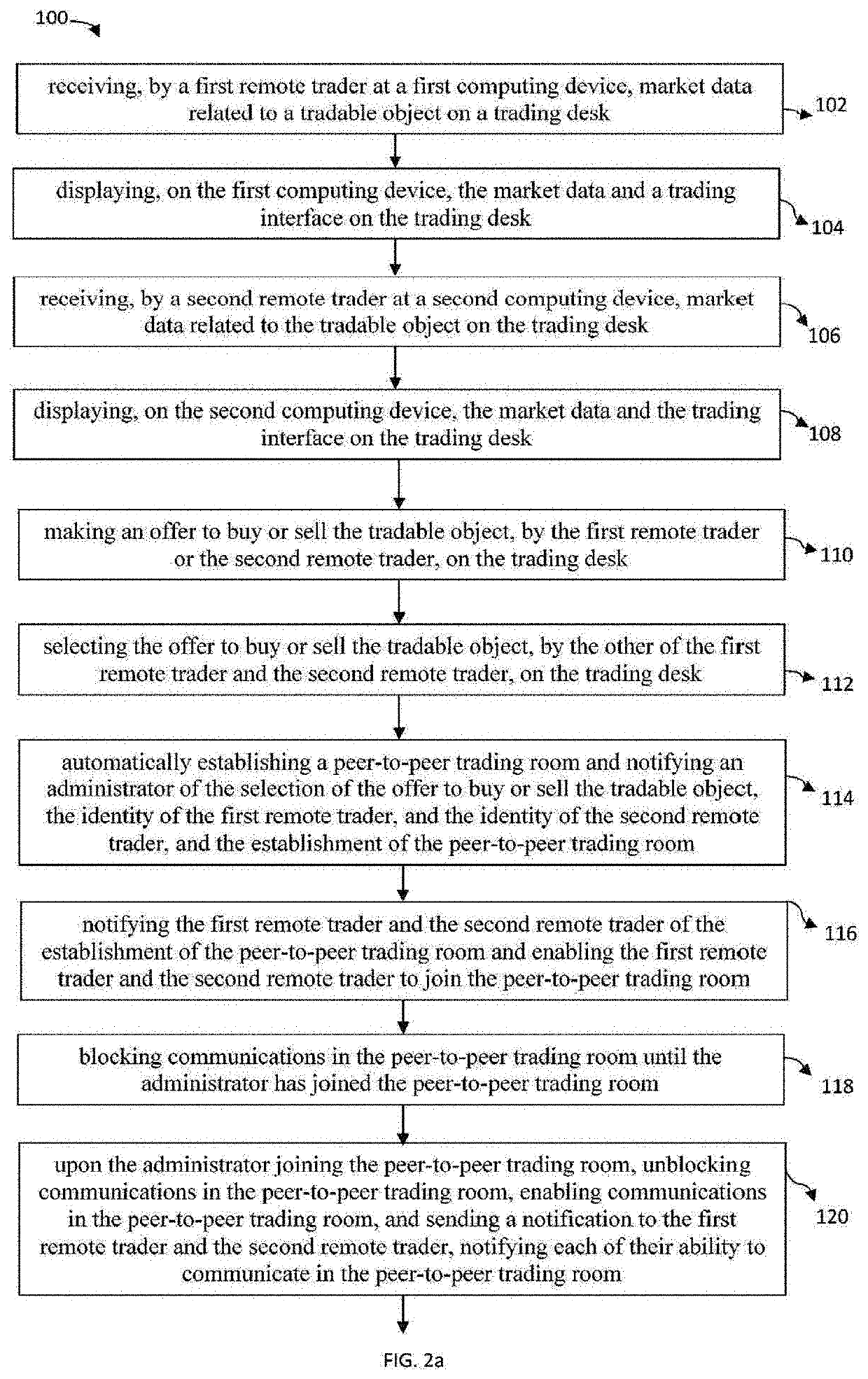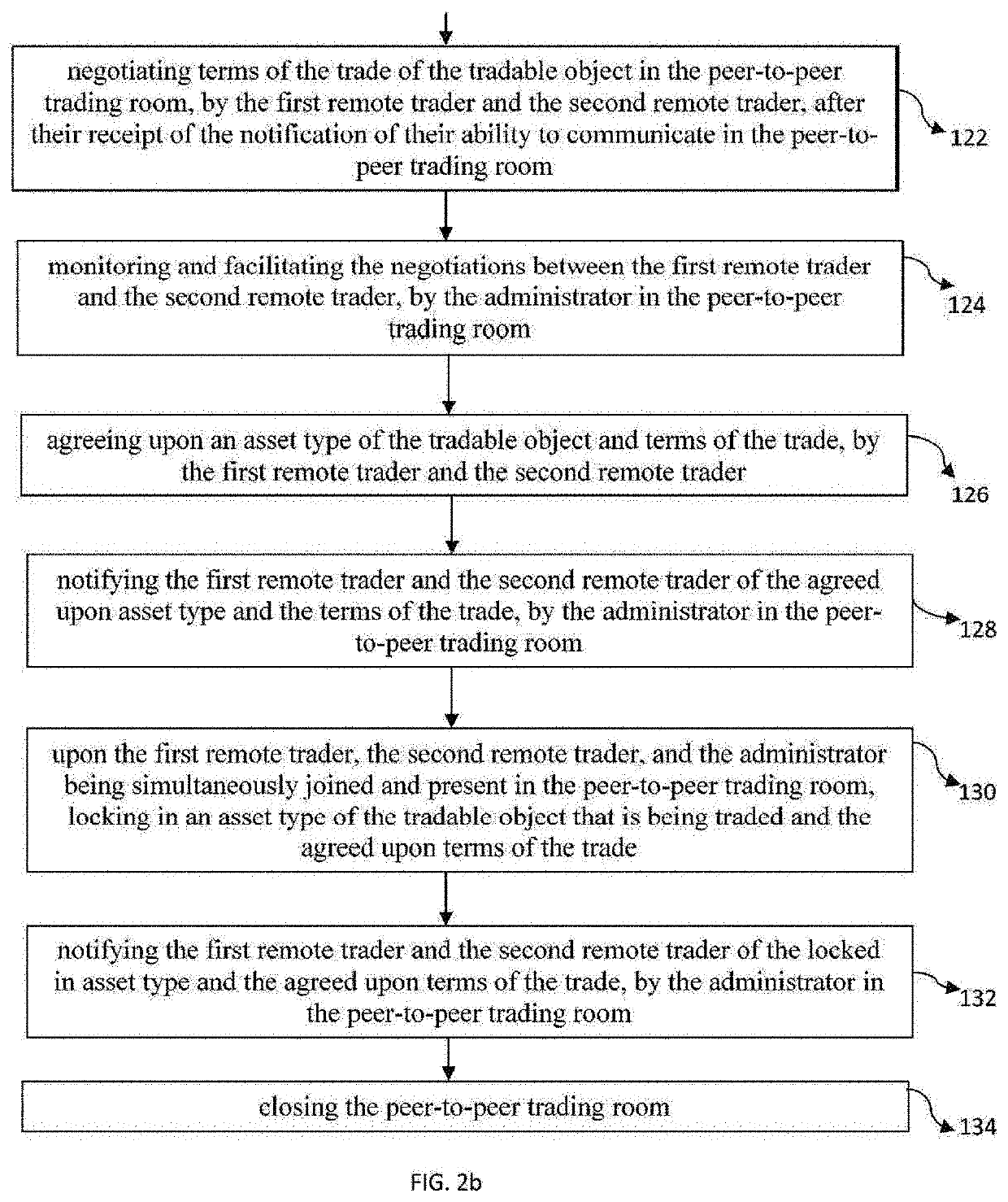System and method for trading a tradable object
- Summary
- Abstract
- Description
- Claims
- Application Information
AI Technical Summary
Benefits of technology
Problems solved by technology
Method used
Image
Examples
Embodiment Construction
[0032]The present disclosure provides a system and method for trading a tradable object. The presently disclosed method and system for trading tradable objects may provide a level of security or oversight that may increase a level of trust by the traders trading the objects. For example, currently objects are electronically traded with little or no oversight such as with direct electronic communications between the traders, for example, messaging, email, telephone, or Skype. A lack of oversight by a third party may reduce a level of trust between the traders. This lack of trust between the traders may be exemplified when one of the objects being traded is an intangible asset or object such as virtual currency. In at least one embodiment of the present disclosure, a system and method provides for an increase in oversight or security and trust of traders trading tradable objects.
[0033]Reference will now be made in detail to the present exemplary embodiments and aspects of the present ...
PUM
 Login to View More
Login to View More Abstract
Description
Claims
Application Information
 Login to View More
Login to View More - R&D
- Intellectual Property
- Life Sciences
- Materials
- Tech Scout
- Unparalleled Data Quality
- Higher Quality Content
- 60% Fewer Hallucinations
Browse by: Latest US Patents, China's latest patents, Technical Efficacy Thesaurus, Application Domain, Technology Topic, Popular Technical Reports.
© 2025 PatSnap. All rights reserved.Legal|Privacy policy|Modern Slavery Act Transparency Statement|Sitemap|About US| Contact US: help@patsnap.com



